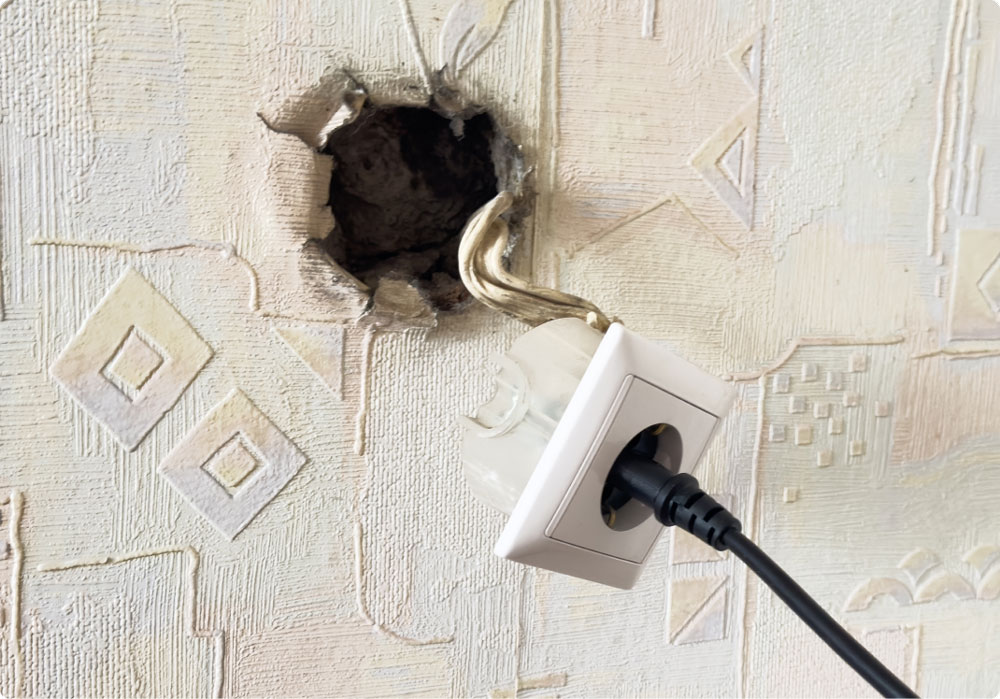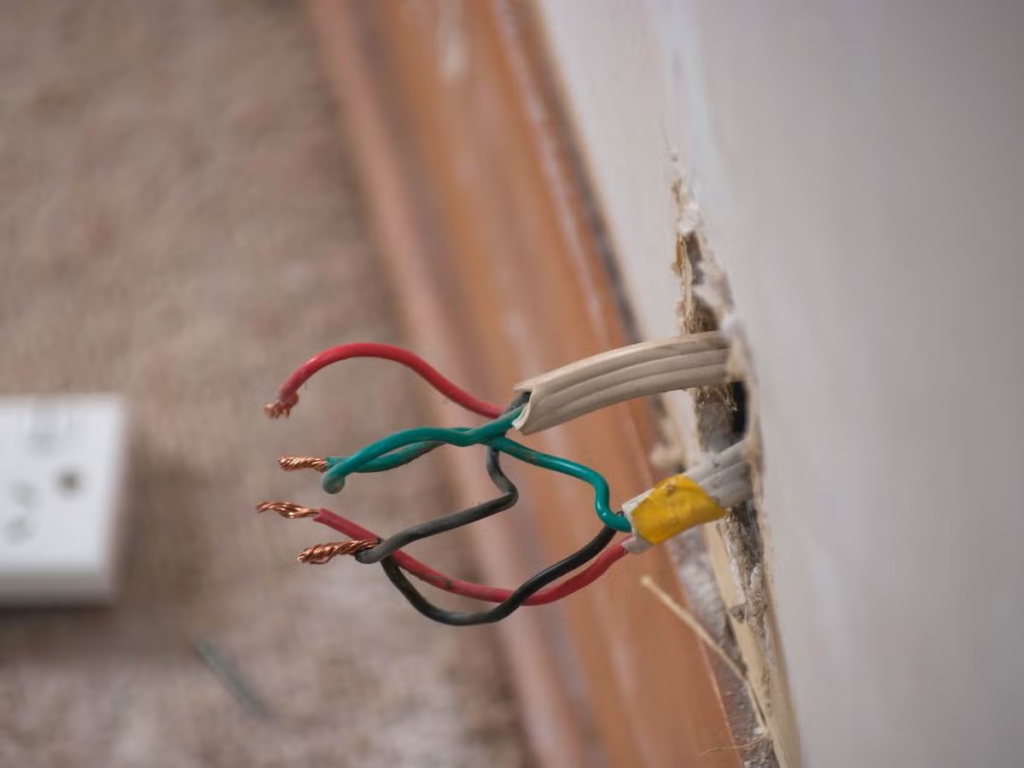We rely on electricity for nearly every aspect of modern living—lighting, heating, appliances, entertainment, and even communication. But when electrical issues strike, they can disrupt your day, pose serious safety risks, and cause costly damage. From flickering lights to dead outlets, understanding the root causes and solutions to common electrical problems can help you stay safe and restore normalcy quickly.
In this blog, we’ll explore some of the most frequent electrical issues homeowners face and explain how professional electricians diagnose and fix them, ensuring your home remains powered, safe, and efficient.

Flickering or Dimming Lights
Common Causes:
- Loose Bulbs or Fixtures: Simple issues like a bulb that isn’t screwed in tightly.
- Voltage Fluctuations: Can cause lights to flicker, especially when large appliances turn on.
- Loose Wiring: Dangerous and a potential fire hazard.
- Overloaded Circuits: Too many devices drawing power on the same line.
How We Fix It:
- Inspect and secure bulbs and fixtures.
- Test voltage levels and circuit load.
- Examine wiring connections and tighten or replace as needed.
- Redistribute loads or add new circuits to reduce overload.
Dead Outlets or Switches
Common Causes:
- Tripped Breakers: A breaker may have tripped due to overload.
- Faulty Wiring or Connections: Worn or damaged wires can cut power.
- GFCI Trips: In bathrooms, kitchens, or outdoor outlets, GFCIs may trip for safety.
- Aging Outlets: Wear and tear over time can lead to failure.
How We Fix It:
- Reset tripped breakers and GFCIs.
- Test outlets with voltage meters.
- Replace worn-out outlets or switches.
- Repair or replace faulty wiring behind outlets.
Circuit Breakers That Trip Frequently
Common Causes:
- Overloaded Circuits: Too many high-wattage devices on one circuit.
- Short Circuits: A hot wire touching a neutral or ground wire.
- Ground Faults: Unintended current paths to ground.
How We Fix It:
- Identify and redistribute heavy loads.
- Inspect for shorts and repair wiring.
- Upgrade circuit capacity or install additional circuits.
Buzzing Sounds or Burning Smells
Common Causes:
- Loose Connections: Can cause arcing and buzzing.
- Faulty Outlets or Switches: Worn internal components.
- Overheating Fixtures or Devices: Can emit burning smells.
How We Fix It:
- Turn off power immediately to the affected area.
- Inspect connections and replace damaged components.
- Check for heat damage and replace overheating devices.
Light Bulbs Burning Out Frequently
Common Causes:
- Incorrect Wattage: Bulbs with wattage higher than fixture ratings.
- Loose Sockets or Connections: Can cause bulbs to overheat and fail.
- Voltage Issues: Surges or spikes can shorten bulb lifespan.
How We Fix It:
- Match bulbs to fixture wattage limits.
- Tighten or replace sockets.
- Test and stabilize voltage levels.
Electrical Shocks When Plugging In Devices
Common Causes:
- Ungrounded Outlets: No safe path for excess electricity.
- Faulty Appliances: Leaking current into the case.
- Poor Wiring: Loose or damaged wires.
How We Fix It:
- Test grounding of outlets.
- Inspect and repair or replace wiring.
- Recommend repair or replacement of faulty appliances.

High Electricity Bills
Common Causes:
- Inefficient Appliances: Old devices consuming more power.
- Phantom Loads: Devices drawing power even when off.
- Poor Wiring Efficiency: Losses due to outdated systems.
How We Fix It:
- Perform an energy audit.
- Recommend and install energy-efficient appliances.
- Upgrade wiring and panels for efficiency.
Outdated Electrical Panels
Common Issues:
- Insufficient Capacity: Can’t handle modern loads.
- Fuse Boxes: Older systems that are less safe and convenient.
- Breakers That Don’t Trip Properly: Worn or defective components.
How We Fix It:
- Upgrade to a modern circuit breaker panel.
- Increase amperage capacity (e.g., from 100A to 200A).
- Ensure breakers are functioning and meet code.
How We Diagnose Electrical Issues
Professional electricians use a combination of tools and experience:
- Voltage Testers and Multimeters: Measure current, voltage, and resistance.
- Infrared Cameras: Detects overheating or hidden faults.
- Circuit Tracers: Identify wiring paths and breaks.
- Load Testing: Simulate usage to find weak points.
Why Professional Repairs Matter
Attempting DIY fixes for electrical problems can be dangerous. Licensed electricians:
- Follow code and safety standards.
- Have the training to identify underlying issues.
- Ensure permanent, safe solutions.
- Provide warranties for work.
Preventive Measures: Keeping Issues at Bay
- Regular Inspections: Annual checks catch problems early.
- Surge Protection: Whole-home surge protectors prevent damage.
- GFCI and AFCI Upgrades: Enhance safety in vulnerable areas.
- Routine Maintenance: Keep connections tight and systems clean.
Conclusion: Safe, Reliable Power Starts Here
Electrical issues can range from minor annoyances to serious hazards. Whether it’s flickering lights, faulty outlets, or breakers that won’t stop tripping, knowing when to call a professional makes all the difference. With expert diagnosis and repair, your home remains safe, efficient, and fully powered—no matter what challenges arise. Trust skilled electricians to handle the fixes, so you can enjoy peace of mind and uninterrupted comfort.
